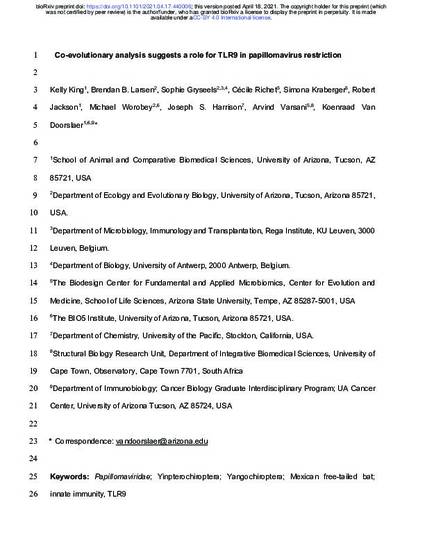
Upon infection, DNA viruses can be sensed by pattern recognition receptors (PRRs) leading to the activation of type I and III interferons, aimed at blocking infection. Therefore, viruses must inhibit these signaling pathways, avoid being detected, or both. Papillomavirus virions are trafficked from early endosomes to the Golgi apparatus and wait for the onset of mitosis to complete nuclear entry. This unique subcellular trafficking strategy avoids detection by cytoplasmic PRRs, a property that may contribute to establishment of infection. However, as the capsid uncoats within acidic endosomal compartments, the viral DNA may be exposed to detection by toll-like receptor (TLR) 9. In this study we characterize two new papillomaviruses from bats and use molecular archeology to demonstrate that their genomes altered their nucleotide composition to avoid detection by TLR9, providing evidence that TLR9 acts as a PRR during papillomavirus infection. Furthermore, we demonstrate that TLR9, like other components of the innate immune system, is under evolutionary selection in bats, providing the first direct evidence for co-evolution between papillomaviruses and their hosts.
Available at: http://works.bepress.com/joseph-harrison/39/
